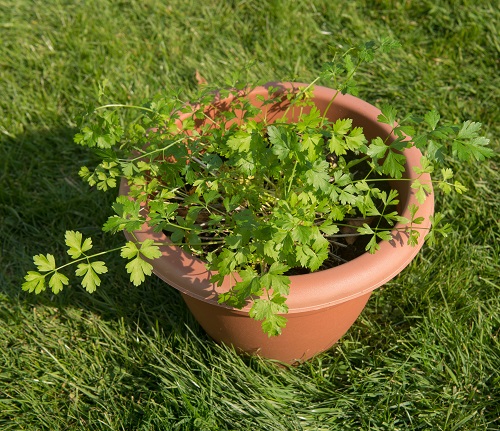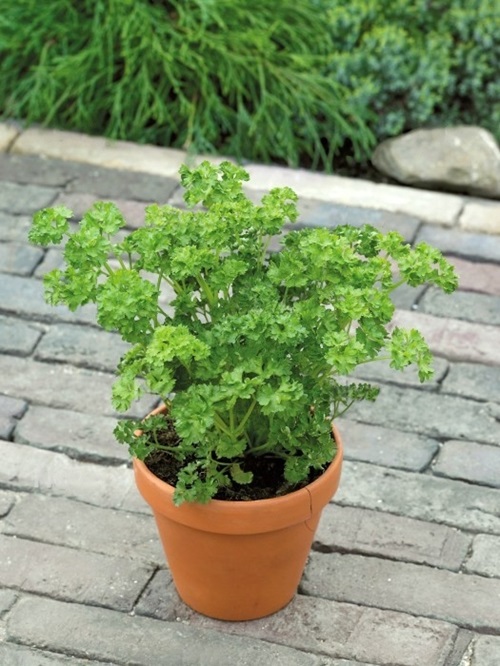Are You Familiar with Different Types of Parsley Varieties? If Not, Let’s Uncover Them in This Guide! Try growing atleast one!
From the classic curly and flat-leaf types to unique options like Hamburg and Japanese, explore how these Different Types of Parsley Varieties can elevate your culinary creations!
Read our Latest Article on Growing Parsley in Pots & Containers here
Different Types of Parsley Varieties
1. Curly Parsley
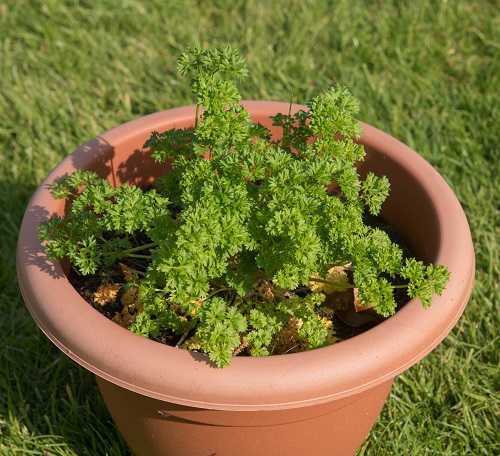
Scientific Name: Petroselinum crispum var. crispum
Curly parsley is the most recognizable variety, with its tightly curled leaves and bright green color. Its mild, slightly peppery flavor makes it a popular garnish for Mediterranean and Middle Eastern dishes.
2. Italian Flat Leaf Parsley
Scientific Name: Petroselinum crispum var. neapolitanum
Known for its broader, flat leaves and robust flavor, Italian flat-leaf parsley is a staple in Italian cooking. Its stronger taste and aroma make it a preferred choice for adding an extra layer of flavor to sauces, soups, and marinades.
3. Hamburg Parsley
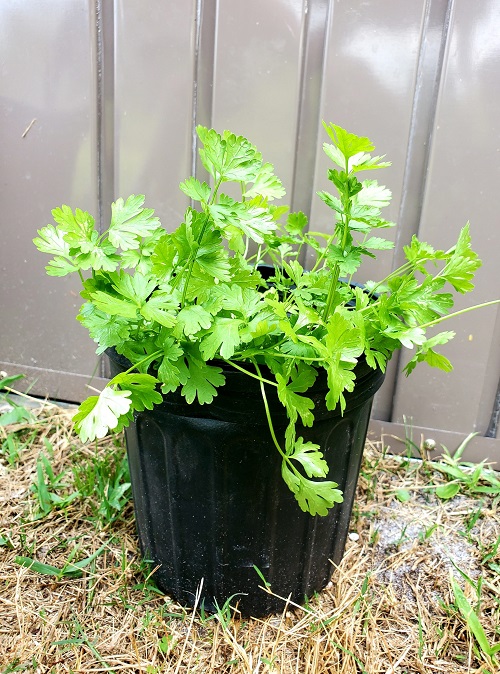
Scientific Name: Petroselinum crispum var. tuberosum
Commonly known as Hamburg parsley or root parsley, it is a lesser-known variety of the popular herb parsley. This variant is grown primarily for its edible root, typically used in soups, stews, and roasted vegetable dishes.
4. Japanese Parsley (Mitsuba)
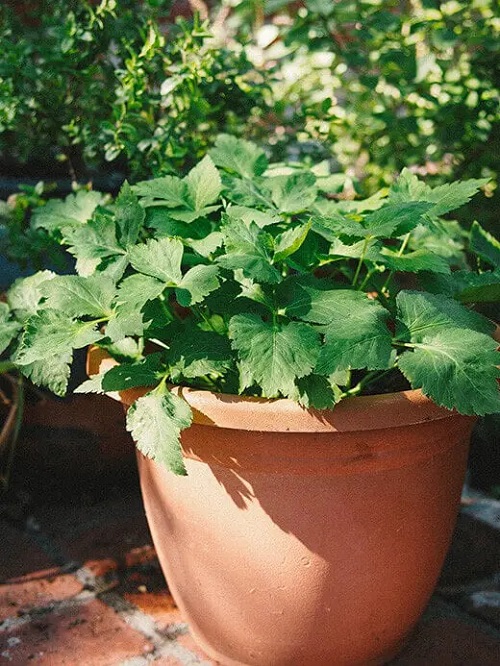
Scientific Name: Cryptotaenia japonica
Hailing from East Asia, Japanese parsley, or Mitsuba, offers a unique blend of flavors reminiscent of parsley, celery, and cilantro. Its bright green leaves enhance salads, sushi, and broths in Japanese cuisine.
Here are some Best Medicinal Plants with Their Benefits
5. Brazilian Parsley
Scientific Name: Eryngium foetidum
It is not a true parsley but belongs to the Apiaceae family like parsley. It has a strong, pungent flavor that is somewhat similar to cilantro but more intense. The leaves taste best in salsas, stews, and marinades
6. Russian Parsley
Scientific Name: Petroselinum crispum
A close relative to common parsley, it usually refers to a variety of parsley well-adapted to cold climates. It has a fresh, earthy flavor similar to common parsley varieties. It is often used to season foods and as a garnish.
7. Vietnamese Parsley
Scientific Name: Polygonum odoratum
It is a staple herb in Vietnamese cuisine and is also popular in other Southeast Asian countries. The leaves are commonly used in traditional Vietnamese soups like Pho and Bún Riêu to impart a unique, peppery flavor with a mix of coriander and lemon taste.
Check out the Difference Between Parsley and Cilantro here
Different Types of Parsley Varieties – Growing Tips
- Select a Suitable Location: Plant parsley in a spot that receives at least 4-6 hours of sunlight daily. If you live in a warmer climate, provide it with some afternoon shade to prevent scorching.
- Prepare the Soil: Parsley thrives in well-draining soil with a slightly acidic to neutral pH (around 6.0 to 7.0). Enrich the soil with compost or well-rotted organic matter for optimal growth.
- Watering: Parsley prefers consistently moist soil. Water the plants regularly, ensuring the soil doesn’t dry out completely. Mulching can help retain moisture and regulate soil temperature.
- Fertilize Wisely: Apply a balanced or nitrogen-rich fertilizer to encourage leafy growth once in 6-8 weeks. Avoid overfertilizing, as this can result in excessive foliage and reduced flavor.
- Pruning and Harvesting: Begin harvesting parsley when the leaves are large enough to use. Start by snipping the outer leaves, leaving the inner leaves to continue growing. Regular harvesting encourages new growth.
- Prevent Bolting: Parsley can bolt (go to seed) in hot weather. To prevent this, provide shade during the hottest parts of the day and keep the plants well-watered.

